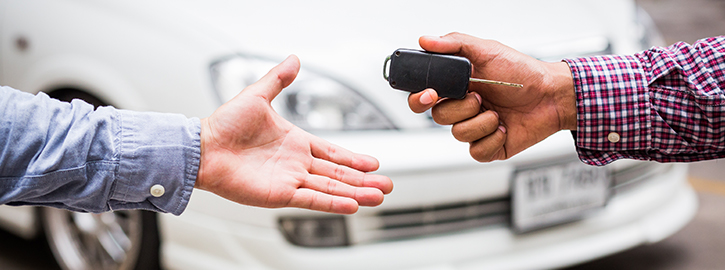Step-by-Step Guide to Selling Your Car Privately
Step-by-Step Guide to Selling Your Car Privately
Blog Article
 Selling your car privately can help you get more money compared to trading it in at a dealership. But it also means you’re responsible for everything—marketing, handling inquiries, and finalizing paperwork. If you’ve been wondering how to sell a vehicle privately or looking for the best way to sell your used car, this guide is for you.
Selling your car privately can help you get more money compared to trading it in at a dealership. But it also means you’re responsible for everything—marketing, handling inquiries, and finalizing paperwork. If you’ve been wondering how to sell a vehicle privately or looking for the best way to sell your used car, this guide is for you.
At The Car Trackers, we help car owners like you navigate the process with clarity and confidence. Below is a complete, step-by-step breakdown of how to sell your used car the smart way.
1. Know Your Car’s Value
Before you list your car, know what it's worth. Use tools like Kelley Blue Book, Edmunds, or AutoTrader to get an estimated value based on your car’s make, model, mileage, and condition. This gives you a realistic price range and prevents you from underselling or scaring off buyers with a high asking price.
Tip: Be honest about your car’s condition when estimating value. A fair price attracts serious buyers faster.
2. Get Your Paperwork Ready
Missing documents can stall or kill a deal. Gather everything a buyer might need:
- Vehicle title (logbook)
- Bill of sale
- Maintenance records
- Emissions test results (if required in your area)
- Owner’s manual
- Release of liability or notice of transfer form
This checklist for selling a car ensures you’re not scrambling last-minute when a buyer shows interest.
3. Get the Car Ready to Sell
First impressions matter. You don’t need to do a full overhaul, but do take time to:
Wash and wax the exterior
Vacuum and clean the interior
Replace burnt-out lights or worn wipers
Top off fluids (oil, brake fluid, coolant)
Fix minor dents or scratches if possible
A clean, well-maintained car sells faster—and often for more money.
4. Take Quality Photos
Photos are what grab attention online. Don’t use blurry, dark, or outdated pictures.
Shoot in daylight and include shots of:
- Exterior (front, back, both sides)
- Interior (seats, dashboard, trunk)
- Odometer
- Engine bay
- Any damage (to be transparent)
The more thorough you are, the fewer questions you'll have to answer later.
Learn More: Taking Car photos with your iphone
5. Write a Clear, Honest Listing
A good listing does more than say “used car for sale.” It answers the buyer’s first questions right away.
Include:
Year, make, model, trim level
Mileage
Condition (mechanical and cosmetic)
Recent maintenance or upgrades
Asking price
Contact info
Location
Avoid hype. Instead, focus on facts. Example: “2015 Honda Civic LX, 112,000 miles, regularly serviced, no accidents, new tires, clean title in hand.”
6. Post on the Right Platforms
One of the most common questions is: What’s the best website to sell a car online?
Here are your top options:
Facebook Marketplace – Fast, local, and free
Craigslist – Good for local sales but be wary of scams
Autotrader – Reputable but has a listing fee
eBay Motors – Great for unique or specialty vehicles
CarGurus – Trusted with many buyers, some fees apply
Use more than one platform for wider reach. Just make sure all listings are consistent.
7. Screen Potential Buyers
Once your listing is live, be prepared for calls, texts, and messages. Some won’t be serious, so screen buyers politely.
Ask if they’ve read the listing
Confirm they’re local
Be firm about payment terms (e.g., cash or bank transfer only)
Never meet at your home. Choose a public place during daylight hours, like a mall parking lot or police station safe zone.
8. Allow for Test Drives (Safely)
A test drive is expected, but take precautions:
Meet in a public location
Bring a friend along if possible
Ask for the buyer’s driver’s license
Ride along during the drive
This step builds trust and shows you’re serious.
9. Negotiate Smart
Buyers will haggle—it’s part of the process. Know your bottom line before you start.
Stay calm and firm
Be ready to justify your asking price (mention new tires, recent oil change, etc.)
If someone offers close to your asking price and seems serious, don’t let a small amount kill the deal
Sometimes it’s better to accept a fair offer quickly than wait weeks for a perfect one.
10. Close the Sale Properly
Once you agree on a price:
Fill out the bill of sale with buyer info and sale price
Sign over the title (check your local DMV rules)
Remove your license plates (unless the law says otherwise)
Cancel insurance after the car is officially transferred
Also, file a release of liability with your DMV to protect yourself in case the buyer racks up tickets or gets into an accident before transferring the title.
Final Thoughts
Selling a used car privately takes more effort than trading it in—but the payoff is usually higher. With this step-by-step guide, you’re not just listing your car; you’re managing the process like a pro.
At F, we know that informed sellers get the best results. Whether you're selling a daily driver or a classic weekend ride, the best way to sell your used car is to take your time, be honest, and stay organized. Report this page